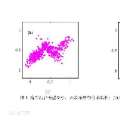Interactions between vehicles and pedestrians have always been a major problem in traffic safety. Experienced human drivers are able to analyze the environment and choose driving strategies that will help them avoid crashes. What is not yet clear, however, is how automated vehicles will interact with pedestrians. This paper proposes a new method for evaluating the safety and feasibility of the driving strategy of automated vehicles when encountering unsignalized crossings. MobilEye sensors installed on buses in Ann Arbor, Michigan, collected data on 2,973 valid crossing events. A stochastic interaction model was then created using a multivariate Gaussian mixture model. This model allowed us to simulate the movements of pedestrians reacting to an oncoming vehicle when approaching unsignalized crossings, and to evaluate the passing strategies of automated vehicles. A simulation was then conducted to demonstrate the evaluation procedure.
翻译:车辆和行人之间的相互作用一直是交通安全的一个主要问题。有经验的人驾驶员能够分析环境并选择有助于他们避免撞车的驾驶策略。然而,尚不清楚的是,自动车辆将如何与行人互动。本文件提出了一个新的方法,用以评价自动车辆的驾驶策略在遇到无信号过境点时的安全性和可行性。安装在密歇根州安阿博尔公共汽车上的Mabileye传感器收集了2 973次有效过境事件的数据。随后,利用多变量高斯混合模式创建了一个随机互动模式。该模式使我们能够模拟行人在接近未信号过境点时对即将到来的车辆作出反应的动向,并评价自动车辆的过往策略。随后进行了模拟,以展示评价程序。





